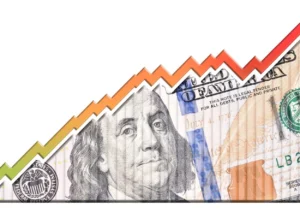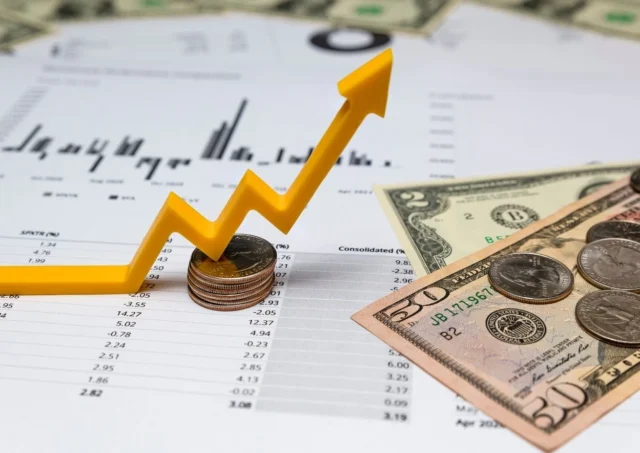Why Savings Accounts Come First
The Best High Interest Savings Account Singapore is something to start with, like crawling before you learn to walk. Everyone talks about stocks, ETFs, and crypto. However, a solid base is important before putting money into markets that behave like yo-yos. The money in your savings account in a competitive interest account works silently in the background to grow.

Think of it as a practice ground. You will learn to see your balance grow, to make regular transfers, and to be disciplined. The habits are transferred to the time you finally come out to make investments.
The Safety Net Before Risk
ETFs and stocks have the ability to accumulate wealth at a faster rate. But they are able to shrink it too. A high-interest savings account provides you with a cushion. When markets drop, you won’t rush to sell your investments in a panic since you will have cash reserves in the background making regular returns.
Emergency Funds First
Financial rule number one: have an emergency fund. That is where savings accounts shine. Three or six months of costs, put out of reach, waiting to be drawn off. After you check that box, you can then afford to play with stocks or ETFs without worrying about each market downturn.
How Interest Builds Confidence
Even interest compounded—no matter how much a few dollars a month—teaches patience. You will also need patience when investing in ETFs and individual stocks.
The Psychology of Small Wins
Even the smallest wins are what humans live on. The fact that interest is being credited on a monthly basis confirms the notion that one can passively increase his wealth. It is training the brain to be open to delayed gratification. The attitude is golden when entering volatile markets.
Why Automation Matters Early
The automation of savings creates uniformity. The money in the form of salary enters, some is deposited in the savings account, and no decisions are necessary. That consistency mirrors investment strategies like dollar-cost averaging in ETFs. Habits you lay down to serve tomorrow.
Removing Friction Saves You
Whenever you have to use memory or perseverance, you run the risk of losing footing. Forget one month, and your savings target collapses. It is foolproof by automation. When you get used to that, the recurring ETF purchases become second nature.
The Low-Risk Classroom
There is a lesson cheaply taught in the savings account. Forget to keep the minimum? You learn about fees. Miss a credit condition? You realize how the interest rates are falling. These are minor punishments that get you ready to take greater punishments in the future. It is preferable to lose here than in a stock market trade.
Safe Space for Trial and Error
You can test strategies in budgeting. Try crediting your salary. Try setting up bill payments. Test the connection of a debit card. These adjustments will give you a lesson in the ways money moves, without the anxiety of red or green candlesticks appearing on a trade screen.
Reinvesting
After you have a good savings base, then the second step is less frightening. You have already developed a habit of saving money. Of continuity you are already aware. Just a logical extension of that flow is to move some of that flow into ETFs or stocks.
Small Allocation First
Don’t jump into the deep end. Have most of your reserves in your savings account. Invest less. That way, you are not wrecking your lifestyle even when markets nosedive.
Why ETFs Pair Well After Savings Accounts
ETFs are nothing more than stock baskets. They are not as fast as individual company shares; hence, they are a less intense drop for beginners. The beat you got used to when you were saving monthly can be applied to monthly ETF contributions.
Building Parallel Streams
Security is accounted for by savings. ETFs for growth. They run side by side. In the long run, you will be able to reallocate—less savings, more ETFs—when you have confidence.
The Danger of Skipping Steps
Investing without the necessary savings is running without warming up. You can be making money, and you are not covered. One crisis, and you will be compelled to liquidate assets at the most inopportune time. That is the way wealth schemes fail.
Stories of Regret
A market rally had lots of new entrants into stocks. Then life threw a curveball—a hospital bill, loss of job, or family emergency. They could do nothing but sell, since they had no savings. Often at a loss. They would have been spared the heartbreak by the mere savings buffer.
Why Singapore’s Market Environment Helps
Local banks are also competing intensively in terms of rates and offers. That provides novices a substantial savings account discount. Meanwhile, brokerages in this area provide low accessibility to ETFs in the major markets. The ecosystem enables a progressive process of savings to investments.
Accessibility for Beginners
You do not have to start with thousands. Savings accounts open with modest deposits. Small and frequent contributions are permissible on ETF platforms. This barrier is not as great as most people think, and this means that anybody can begin the construction of this dual system.
Long-Term Mindset Pays
Savings accounts are not going to make you rich. That’s not their purpose. They are supposed to stabilize, to teach, and to prepare. The wealth-growth spurt later occurs with stocks and ETFs. However, without that ground, you run the risk of falling even before you start.
The Compound Effect Across Both
Interest compounds quietly. Dividends from ETFs compound noisily. They accumulate over the years to become big. But patience is the ticket. Safety first, then the growth will come naturally.
Practical Steps for Beginners
Choose a high-interest savings account that has simple requirements.
Credit your salary into that account.
Build three to six months of expenses there.
Automate monthly transfers into it.
When that money is available, open a brokerage account.
Start small with a broad-market ETF.
Maintain both streams side by side.
Closing Perspective
The first dollar to invest should follow the first dollar to save. Think of savings as your shield and investments as your sword. You will get unnecessary hits without the shield. It can also help you venture into the market knowing that you are insured.
It is not a glamorous strategy to pair the best high-interest savings account in Singapore with eventual ETF and stock investing. It is the one, however, that will keep beginners on track, secure, and prepared to proceed with the next phase of their financial life.










